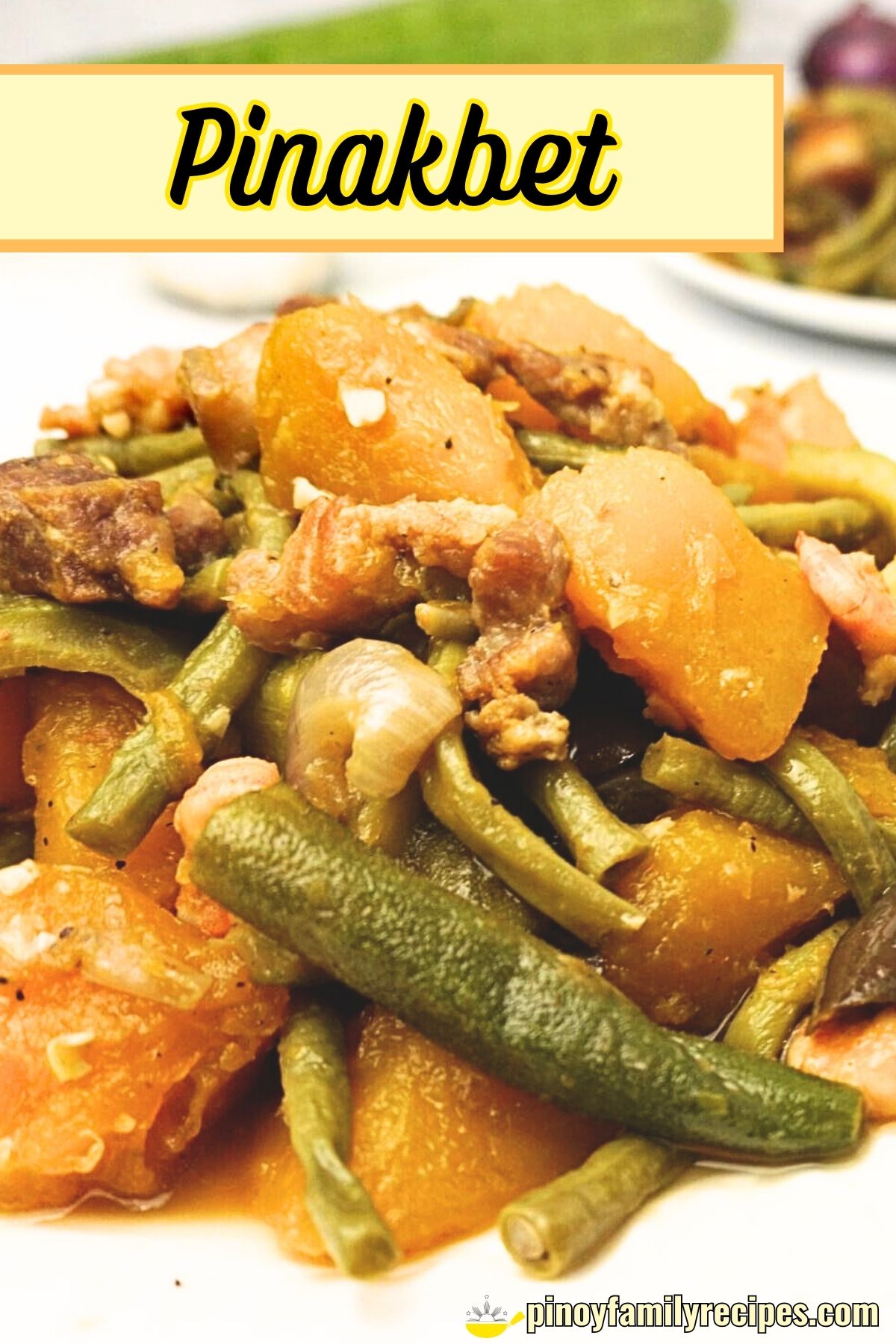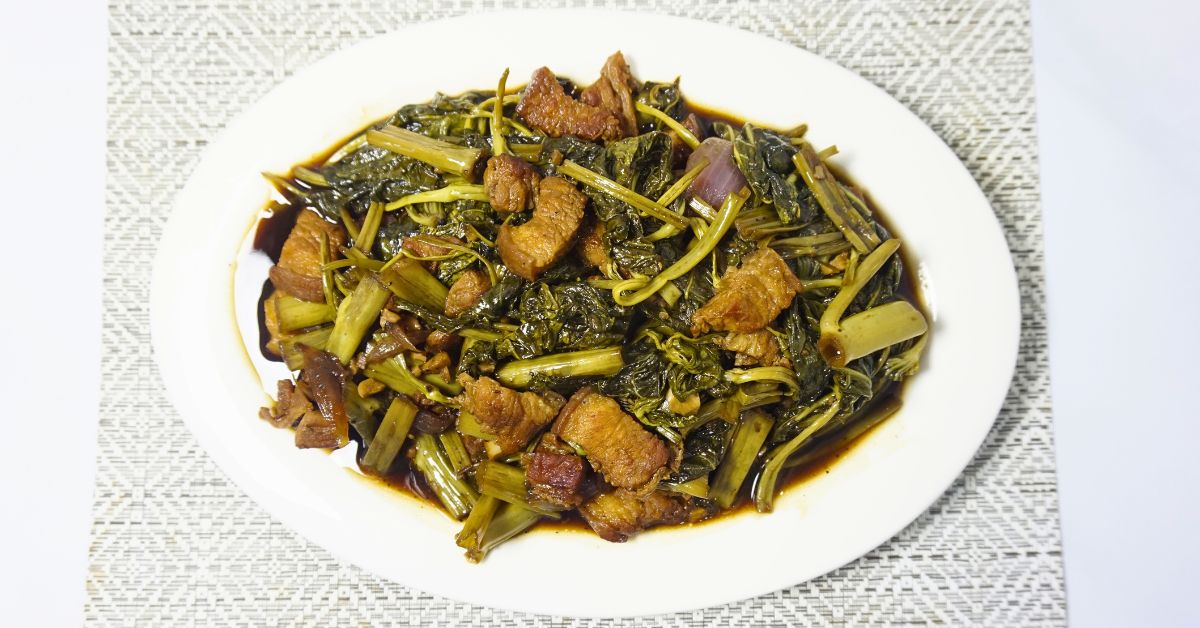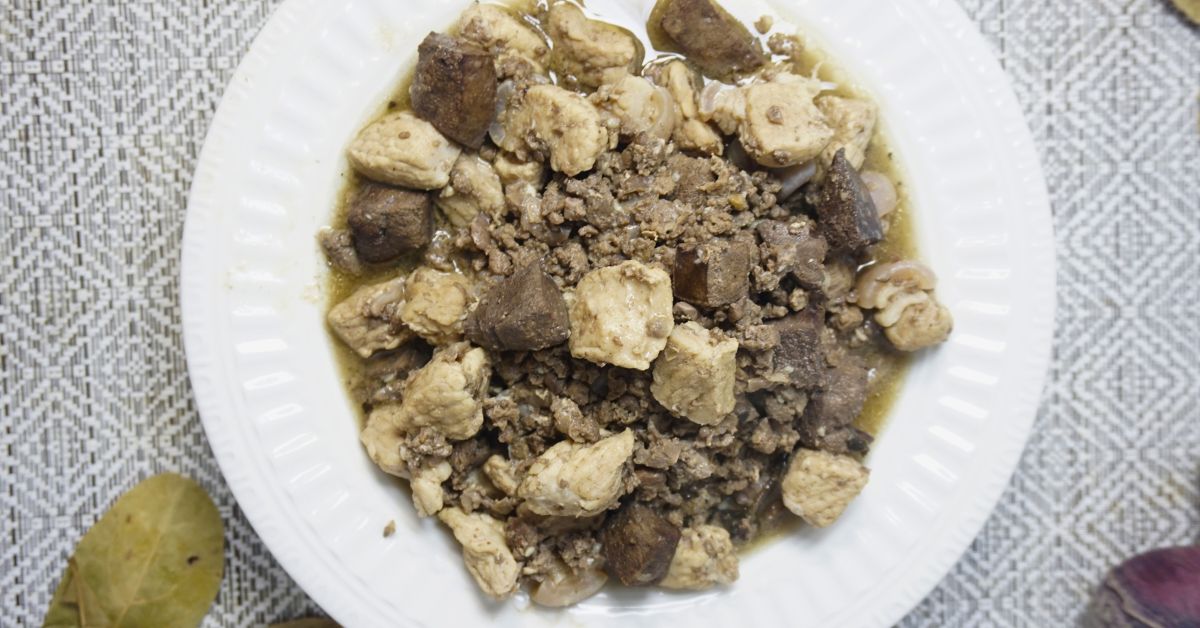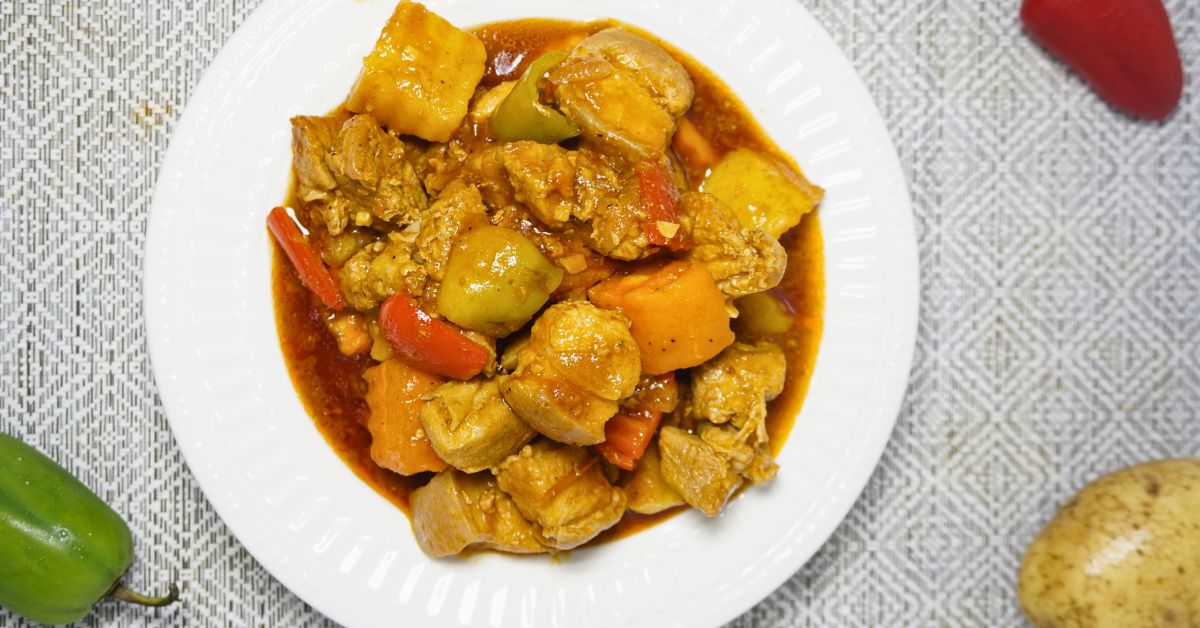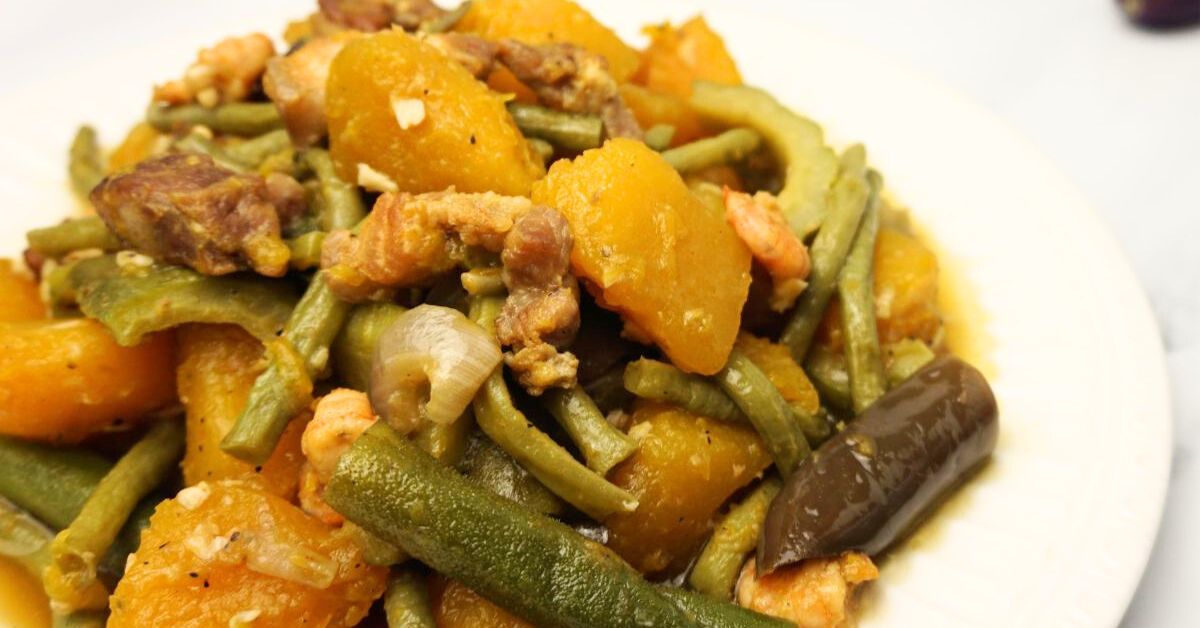
Vegetable lovers, where you at? If you’re like me and can’t get enough of those greens, you’re in for a real treat! Today, I’m sharing one of the most well-loved Filipino veggie dishes—Pinakbet.
Just picture it: kalabasa, talong, okra, sitaw, and more, all simmered together in a rich, savory sauce packed with umami from bagoong. That’s Pinakbet! It’s hearty, healthy, and full of flavor. The kind of dish that hits the spot and makes you feel good after every bite.
But before we jump into cooking, here’s a quick backstory. Pinakbet comes from the northern part of the Philippines, where fresh veggies are everywhere and bold flavors rule the table. It’s a classic that’s been passed down through generations, and each household has their own little twist.
Now, I know what you might be thinking—“Isn’t Pinakbet hard to cook?” Nope! It’s actually super simple. With a few basic ingredients and a little guidance, you’ll be serving up your own delicious pot of Pinakbet in no time.
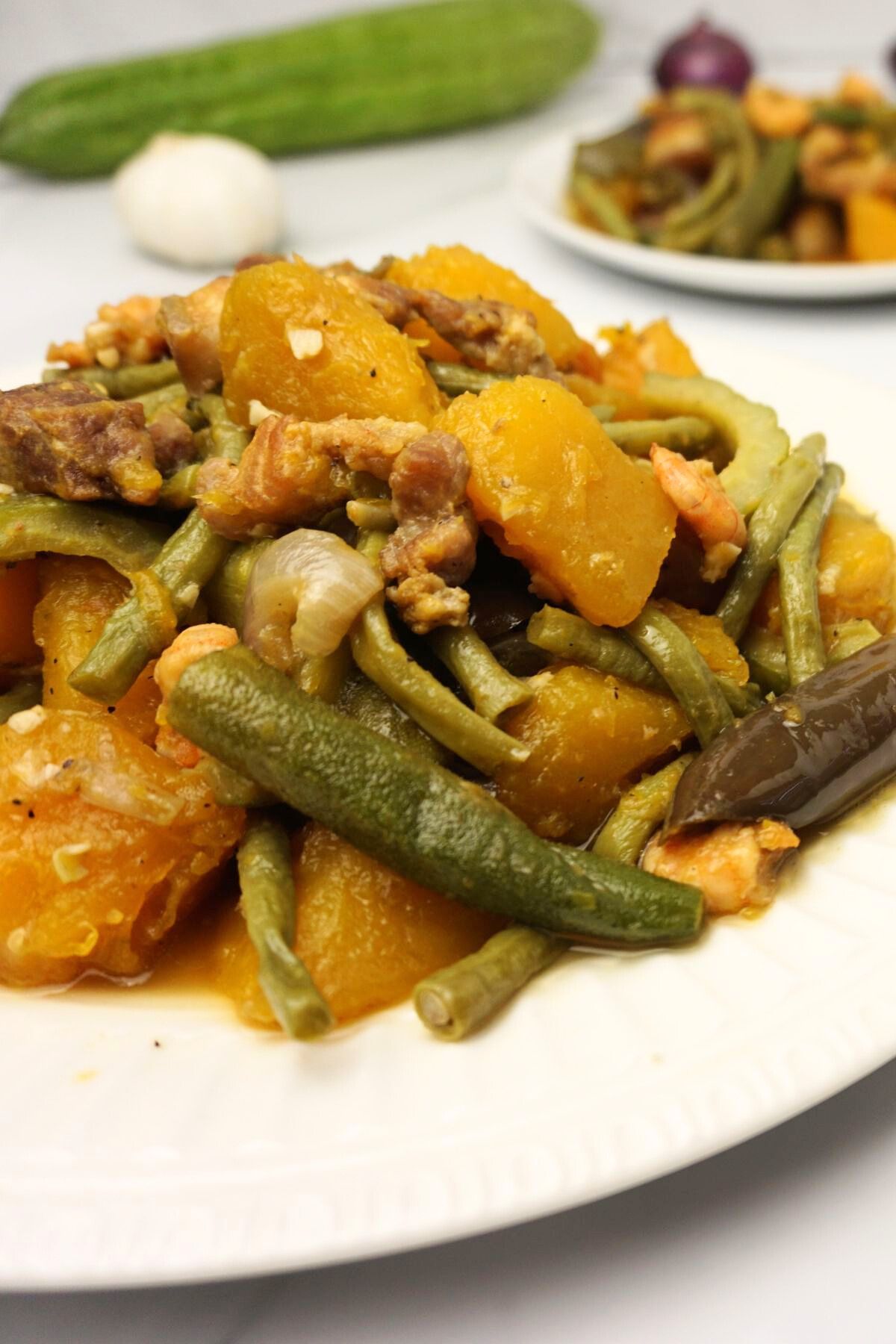
Why Do Filipinos Love Pinakbet
Filipinos really love Pinakbet, and for good reason—it’s packed with vegetables we actually enjoy eating, like kalabasa and talong. What’s great about it is how flexible it is. You can easily make it your own by adding different ingredients or sahog that you like. And beyond the taste, Pinakbet connects us to our culture. It’s a dish that’s been passed down through generations, keeping our Filipino food traditions alive.
Here in the Philippines, we actually have two well-known versions of Pinakbet, and each one has its own charm.
First up, there’s the Ilocano version, probably the most familiar to many. It’s made with a mix of veggies like kalabasa, okra, talong, and ampalaya, all cooked in a savory sauce flavored with bagoong isda. That’s a thick fermented fish sauce usually made from anchovies and salt. Some folks also add pork or shrimp to make it even tastier.
Then there’s the Tagalog version, which uses shrimp paste or alamang instead of fish sauce. It gives the dish a slightly sweeter, more distinct flavor. The veggies in this version are sometimes chopped smaller too, so you get a different texture with every bite.
Both versions are delicious in their own way and show just how diverse Filipino cooking can be. Whether you like the bold, earthy taste of the Ilocano version or the rich and savory flavor of the Tagalog one, Pinakbet is always a solid choice.
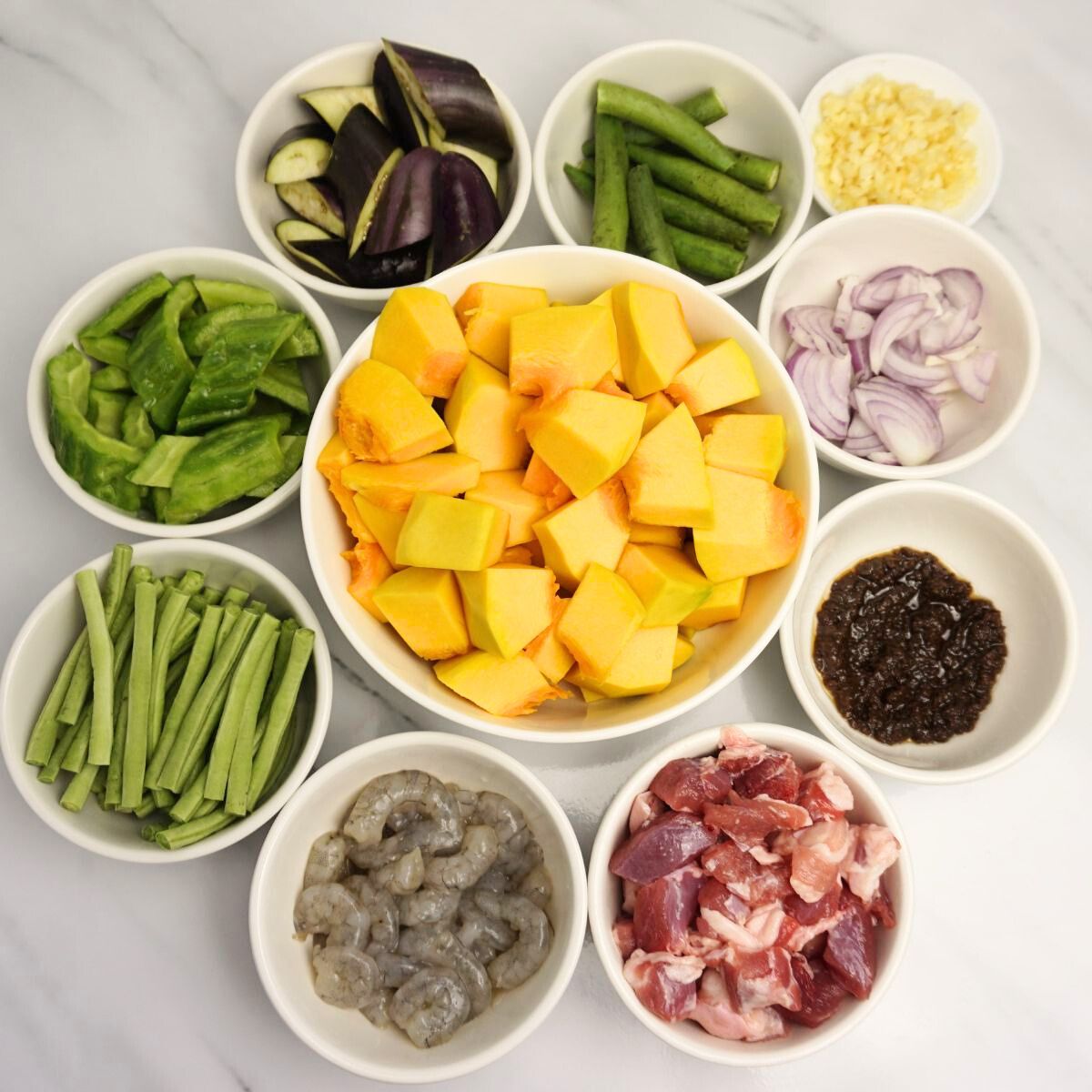
Pinakbet Ingredients
- Pork (Small slices): Tender slices of pork add meaty flavor and texture to the dish, complementing the vegetables perfectly as they soak up the savory sauce.
- Garlic: With its intense aroma and bold flavor, garlic brings depth and richness to the dish, enhancing the overall taste profile.
- Onion: Sweet and aromatic, onions add a subtle sweetness to the dish while providing a flavorful base for the other ingredients to build upon.
- Shrimp Paste: Packed with umami goodness, shrimp paste adds a distinctive salty-savory flavor to the dish, elevating its taste to new heights.
- Shrimp (Small): These little gems of the sea bring a burst of seafood flavor to the dish, adding a touch of sweetness and juiciness to every bite.
- Squash: Soft and sweet, squash adds a creamy texture and natural sweetness to the dish, balancing the savory and salty flavors.
- String Beans: With their crisp texture and fresh flavor, string beans add a satisfying crunch and vibrant color to the dish, making it visually appealing and enjoyable.
- Water: Water helps create the flavorful sauce that coats the vegetables and meat, ensuring that every bite is delicious.
- Okra: Slimy yet satisfying, okra adds a unique texture and subtle earthy flavor to the dish, making it a favorite among vegetable lovers.
- Eggplant: Soft and silky, eggplant absorbs the dish’s flavours while adding a hearty and meaty texture, making it a delicious addition to any Pinakbet recipe.
- Bitter Gourd: Bitter yet refreshing, bitter gourd adds a distinctive bitterness to the dish, balancing the other ingredients’ sweetness and depth to the flavor profile.
- Salt and Pepper: These essential seasonings enhance the flavours of the dish, adding depth and complexity to the overall taste experience. Adjust according to your preference to achieve the perfect balance of flavors.
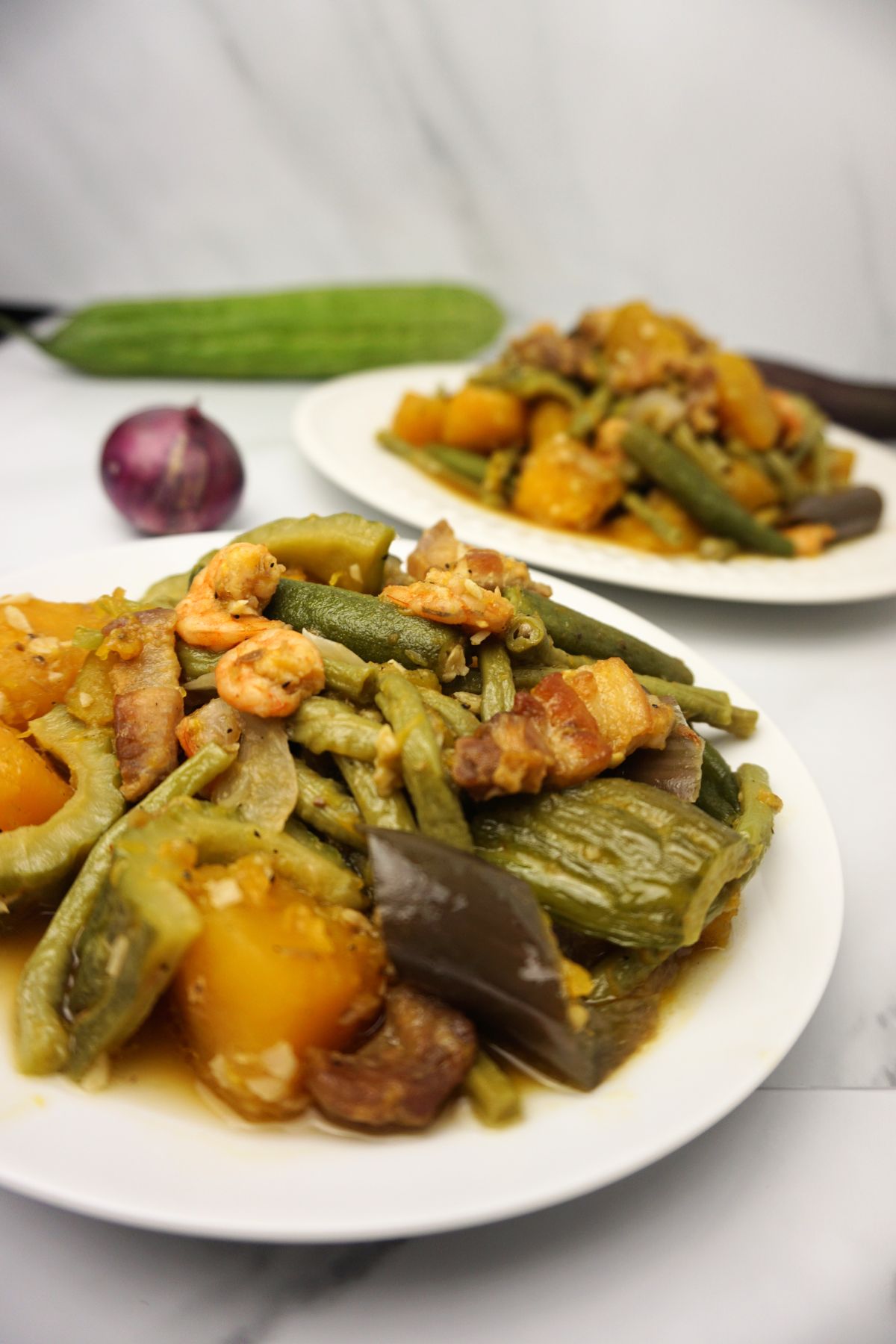
How To Cook Pinakbet
Here, I am cooking the Tagalog version, using shrimp paste or alamang.
Sauté the Pork
Start by heating some oil in a pan and tossing in the sliced pork. Let it cook until the fat starts to render out and the pork gets nice and browned. Once it’s done, transfer it to a bowl and set it aside for later.
Sauté the Aromatics
Next, use that same pot to sauté some garlic and onion until they’re fragrant and golden brown. Then, add three tablespoons of shrimp paste and let it simmer before tossing in the peeled shrimp.
Cook the Veggies
Now, it’s time to add the veggies! Please start with squash since it’s the hardest of them. Cover the pot and let it simmer until the squash softens.
Add More Veggies
Once the squash is on its way, throw in the string beans and pour a cup of water. Bring it all to a gentle boil until the squash is tender.
Finish with the Rest
Add the okra and eggplant to the pot, covering it up and letting everything simmer together until the veggies are cooked to perfection. After a few minutes, add the bitter gourd and let it simmer for five more minutes, giving everything a gentle toss to ensure it mingles nicely.
Season and Simmer
Give it all a taste and add salt to adjust the seasoning according to your preference. Then, please return the sautéed pork and toss it back into the pot. Let it all simmer together for just a minute to let those flavours meld beautifully.
Serve and Enjoy
And there you have it – a steaming pot of Pinakbet that will satisfy your cravings! Transfer it to a bowl or plate and serve it up hot, ready to enjoy with steamed rice or on its own.
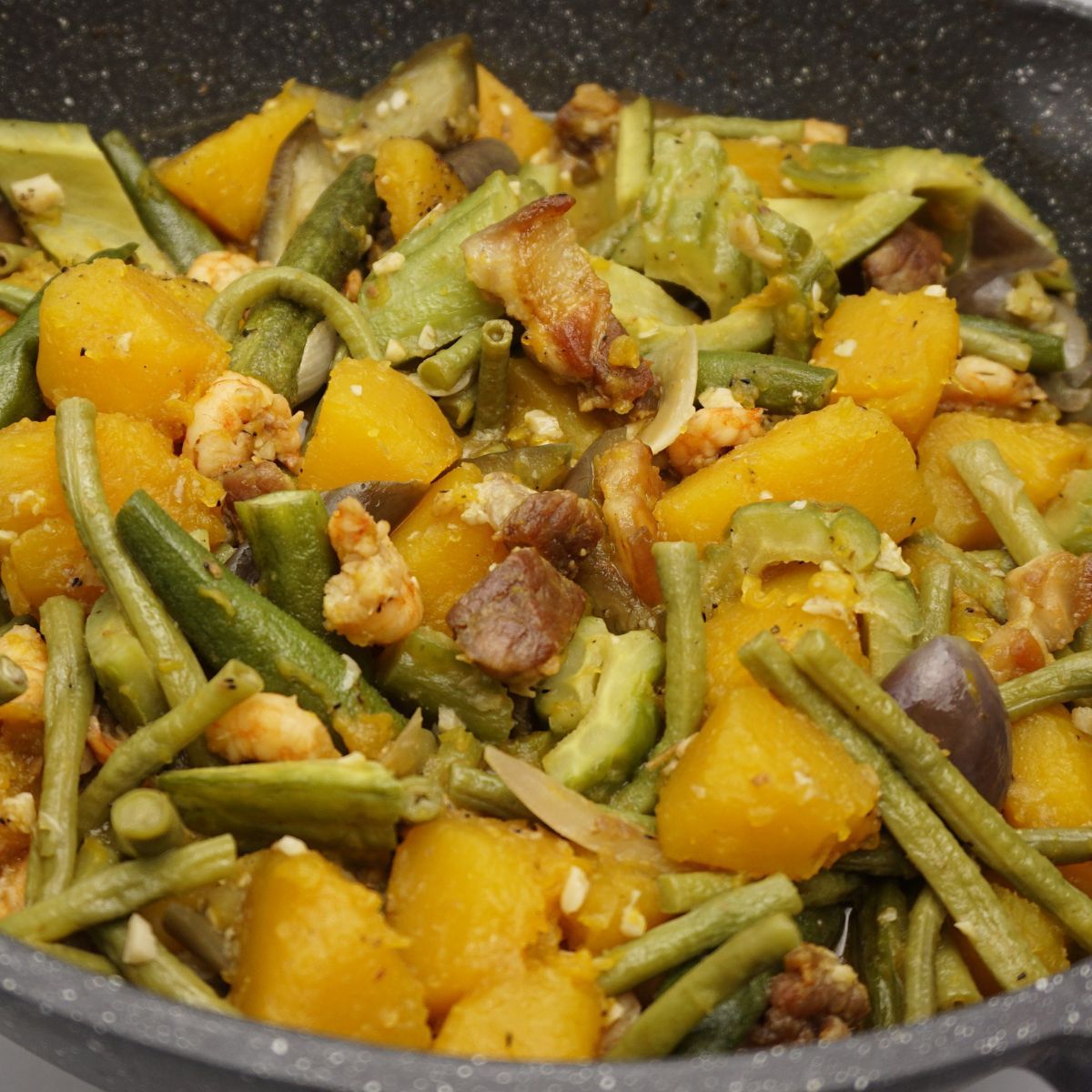
What to Serve With Pinakbet
If you visit Carinderias or Filipino-style restaurants here in the Philippines, you’ll notice that Pinakbet will only be complete with a partner dish. Here are my tried and tested recommendations to complete your Pinakbet meal:
Grilled or Fried Fish
Pair your Pinakbet with a serving of grilled or fried fish, such as tilapia or bangus. The simplicity of the fish allows the flavors of the Pinakbet to shine, creating a satisfying and balanced meal.
Crispy Pork Belly (Lechon Kawali)
Indulge your taste buds by serving Pinakbet with crispy fried pork belly or lechon kawali. The crunchy texture of the pork belly complements the soft vegetables in the Pinakbet. At the same time, the savory flavor adds an extra layer of deliciousness to the meal.
Grilled or Roasted Chicken
Another excellent option is to serve Pinakbet with grilled or roasted chicken. The juicy, tender chicken pairs perfectly with the hearty vegetables, creating a comforting and satisfying meal that’s sure to please everyone at the table.
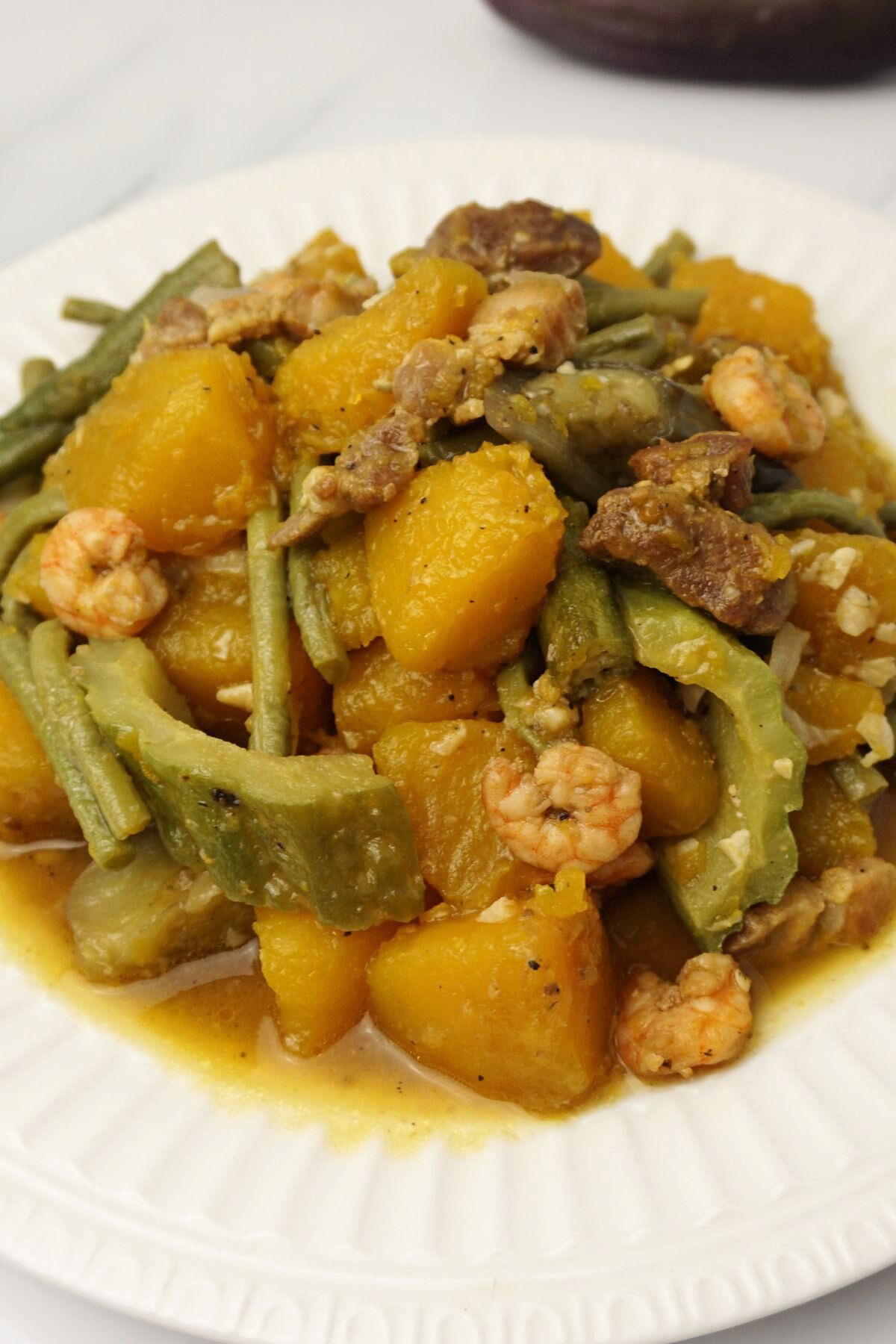
Cooking Tips on Pinakbet Recipe
Use Fresh Ingredients
For the best flavor and texture, use fresh vegetables, high-quality shrimp, and pork. Fresh ingredients will make a noticeable difference in the final dish.
Cut Vegetables Uniformly
To ensure even cooking, cut your vegetables into uniform pieces. This will help them cook at the same rate and prevent some from becoming overcooked while others are still undercooked.
Sauté Aromatics Well
Take your time when sautéing the garlic and onion and cooking them until golden brown will enhance their flavour and add depth to the dish.
Adjust Seasoning Carefully
Pinakbet relies on the balance of flavors, so taste as you go and adjust the seasoning accordingly. Be mindful of the saltiness of the shrimp paste and adjust the amount of salt added accordingly.
Simmer Gently
Once you’ve added all the ingredients to the pot, let the Pinakbet simmer gently over low to medium heat. This allows the flavors to meld together and the vegetables to cook through without becoming mushy.
Don't Overcook the Vegetables
Keep an eye on the vegetables as they cook to prevent them from becoming too soft. They should be tender but still have a bit of bite to them.
Add the Bitter Gourd Last
Bitter gourd cooks relatively quickly compared to other vegetables, so add it to the pot towards the end of cooking to prevent it from becoming too mushy.
Let it Rest Before Serving
Allow the Pinakbet to rest for a few minutes before serving. This allows the flavours to intensify and ensures that the dish is at its best when served.
Frequently Asked Questions
Yes, you can use other meats like beef or chicken for a different flavor twist in your Pinakbet.
To reduce the saltiness, you can add more water or balance it out with a bit of sugar or vinegar.
Yes, you can make Pinakbet ahead of time and reheat it before serving, but be mindful that the vegetables may become softer upon reheating.
Yes, you can use frozen shrimp, but be sure to thaw and drain them before adding them to the dish.

Pinakbet Recipe
Ingredients
- 400 grams Pork (small slices)
- 6 cloves Garlic
- 1 piece Onion large (sliced)
- 3 tbsp Shrimp Paste
- 250 grams Shrimp small
- 1 piece Squash small (squared)
- 10 pieces String Beans (about 3-inch length)
- 1 cup Water
- 10 pieces Okra
- 2 pieces Eggplant (sliced)
- 1 piece Bitter Gourd medium (sliced)
- Salt and Pepper to taste
Instructions
- In a pan saute the sliced pork, let it cook until fat renders. Put it in a bowl and set aside.
- In the same pot, saute the garlic and onion, then add three tablespoons of shrimp paste. Let it simmer then add the peeled shrimp.
- Add the squash first for it's the hardest among the vegetables. Cover and let it simmer.
- Then add the string beans and put in a cup of water. Bring to boil until the squash is slightly tender.
- Then add the okra and eggplant. Cover and let it simmer.
- After a few minutes add the bitter guard, let it simmer for five minutes then toss one time.
- Check and add salt to adjust according to taste.
- Add the sauteed pork and toss one last time. Simmer for one minute.
- Transfer to a bowl or plate and serve!
Video
Notes
- For a richer flavor, you can add a bit of coconut milk.
- Be careful not to overcook the vegetables. They should be tender but still have some bite.
